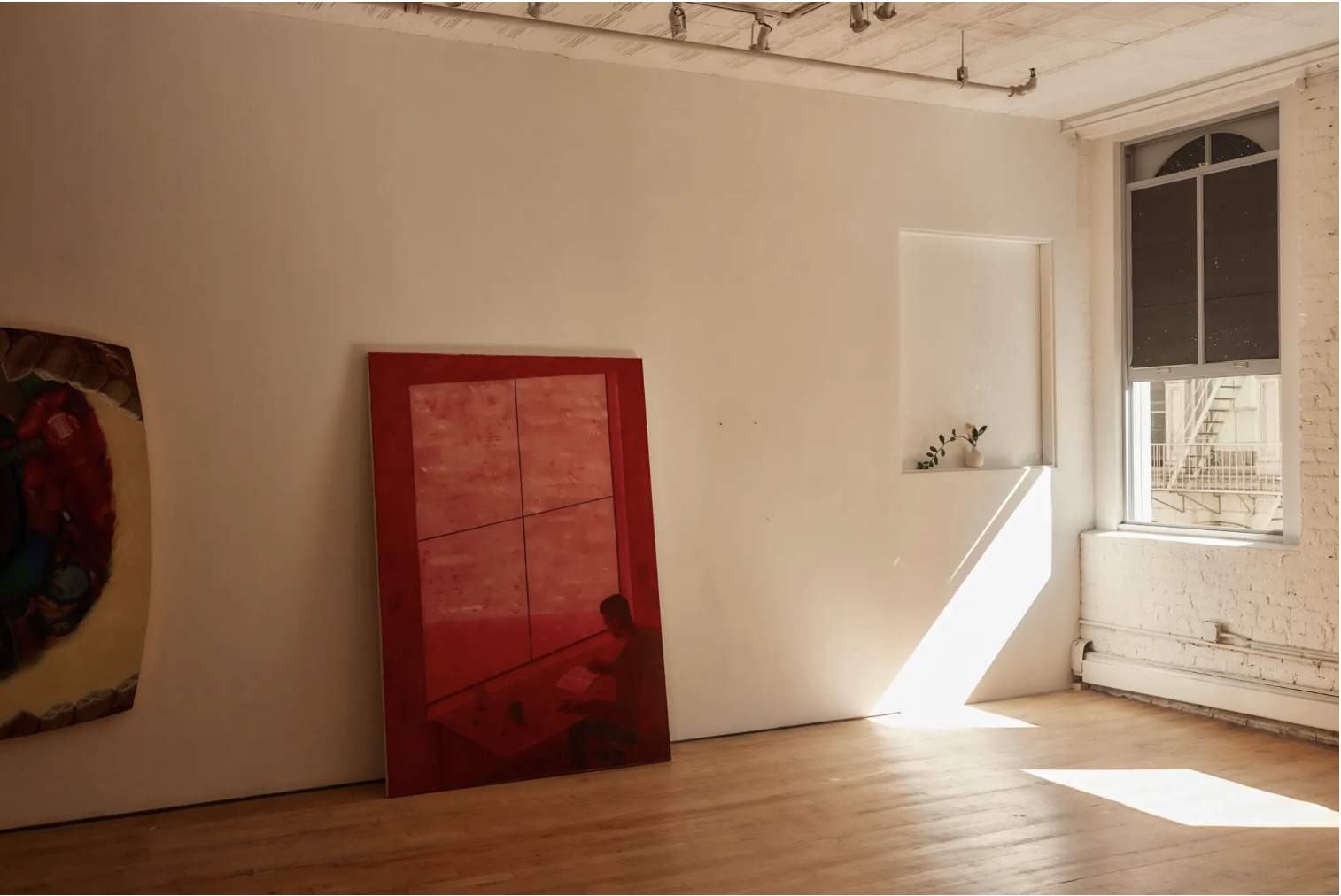The New York Times Style Magazine: Where the Artists Are Present – and in Charge
Galleries owned and operated by artists have a rich history in New York as an alternative to the mainstream. They are now as important as ever.
By Jennifer Wilson
Published Sept. 26, 2023
Onyedika Chuke, the founder and director of Storage gallery in TriBeCa, next to a painting by Jeff Way. Emiliano Granado
For these early artist-run galleries, the goal was ultimately to create an uptown market for downtown art. They were envisaged as interim fixes, stopgaps to introduce young and untested artists to major art buyers for as long as they could afford to keep doing so. By the 1960s, artist-run galleries became more experimental, interrogating the idea of not only the gallery but of the exhibition itself. They sought to foster experiences that could not be replicated, let alone sold. The critic Louis Menand notes that in her loft at 112 Chambers Street, Yoko Ono threw some of the contents of her fridge at a wall-mounted sheet of paper, then set it on fire, as a performance.
A painting by Way in the back room at Storage gallery. Emiliano Granado
Many artist-run galleries of this era have since shuttered, chased out by high rents and the low morale that can come with them. However, the early 1970s saw the establishment of two major galleries that exist to this day: A.I.R. Gallery(founded in 1972 by 20 women) and Amos Eno Gallery (founded in 1974). They established cooperative spaces in SoHo, a part of the city then known for cheap rents and abandoned buildings. A.I.R. was named for the artist-in-residence placards that artists hung over their doorways in lofts that had only been zoned for manufacturing, so the fire department would know to rescue them if someone, say, set something on fire during a performance. José-Ricardo Presman, one of the founding members of Amos Eno, which eventually moved, in the general arc of New York bohemia, to Bushwick, Brooklyn, says he sometimes downplays the word “collective” when describing the gallery to people he meets in his day job. (“I’m in the jewelry business,” he tells me.) They tend to respond, he says, with some variation of, “What are you, a communist?”
Work by Adam Lupton, leaning against the wall at Storage. Emiliano Granado
That kind of radicalism is harder to come by these days, especially in a real estate market like New York City’s. Today, there are scant abandoned warehouses in SoHo or even Bushwick to occupy, and artist-run spaces are under threat of being squeezed out of the very scenes they helped shape. I spoke to a group of artists who run galleries, either themselves or collectively, about their determination to persist amid such circumstances, to continue defining, on their own terms, who and what deserves to be seen. Still, many told me that while they are in tension with the market, they cannot ignore it. Like so many of us, artists or not, they are figuring out how to sell without selling out.
Motohiro Takeda’s “Prescient” (2022), hanging near paintings by Lupton (left) and Way (right) at Storage. Emiliano Granado
THE LIMITS OF what commercial spaces were willing to take on was something that inspired the Nigerian-born artist Onyedika Chuke to also become a dealer. He is now the proprietor of Storage gallery in TriBeCa. Chuke started his career as a sculptor, he tells me, but found he kept running into the same problem. “I wasn’t making racially narrative sculpture.” Chuke, who arrived in the United States at 9, says, “I didn’t know I was Black until I came here.” He founded Storage in 2020 in the basement of a Chinatown restaurant. Though Storage is a commercial gallery, Chuke is attracted to art that is difficult to sell, for instance large sculptures by emerging artists or work that represents a shift in an established artist’s career. The first Storage show contained new works by Emory Douglas, the former minister of culture for the Black Panther Party, and paintings by Rick Lowe, better known for working with artists and nonprofit organizations to rehab dilapidated shotgun houses in Houston’s Third Ward. Chuke aspires to give artists the kind of creative freedom he lacked when he was up and coming. This is something bigger commercial galleries tend to shy away from, preferring that artists stick to their brand. “People want ketchup to always be red,” as he explains.
This is not to say that Chuke doesn’t understand the importance of money. In fact, he gets it better than most in the art world, having grown up poor. He sold 10 of Lowe’s paintings from that first exhibition in two months, and he is proud that his gallery has been profitable recently. (Next up will be a show of paintings by the Japanese-born painter Michiko Itatani.) Chuke, who graduated from Cooper Union, does not have the money of many of his gallery-owning peers, but “know-how and desire are resources, too,” he says. In 2022, he moved Storage into a light-filled loft in TriBeCa. When I arrive, the air-conditioner is out, so we go to the back corner where large industrial fans cool us off. Behind him is a small kitchen. “I wanted it to feel like a 1960s art studio,” he tells me. Chuke has had a hand in every part of making this space, but not necessarily by choice. He could not get a bank loan, a familiar scenario for Black entrepreneurs. He did the entire renovation himself, and many of his neighbors thought he was the janitor because he was always covered in dust. “I think janitors are interesting,” he says, “because they know where everything is.” Chuke often sees the advantages that can come with disadvantages, including his own. Many of the people who operate commercial galleries, he says, “could take more risks, but they weren’t raised to.”




